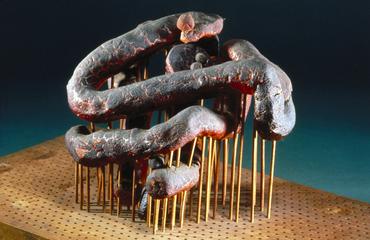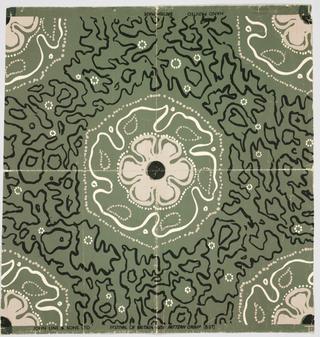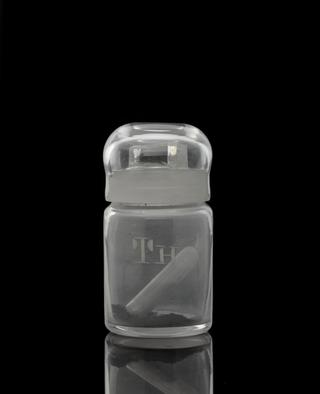Set of objects illustrating clathrate compounds: - (a) model showing complete structrure; (b) model showing portion of structure with atoms to scale in contact; (c) wire model of single quinol molecule; (d) specimen of quinol-argon complex in desiccator mounting
The structure of the quinol clathrates, first prepared by Wöhler in 1848, was determined in 1945 by H. M. Powell using X-ray analysis.
These cage like compounds form when quinol polymerises such that two giant polymers interlock leaving cavities (one cavity per three quinol molecules). Addition compounds containing no chemical bonds, are formed when atoms or small molecules are trapped in these cavities.
The argon-quinol complex is of particular interest since argon (one of the inert gases) is normally incapable of forming chemical compounds.
The crystals were prepared by cooling a solution of quinol in water in a vessel containing argon under pressure (60atm). If dissolved in methanol or heated, the polymeric structure would break down releasing argon gas.






